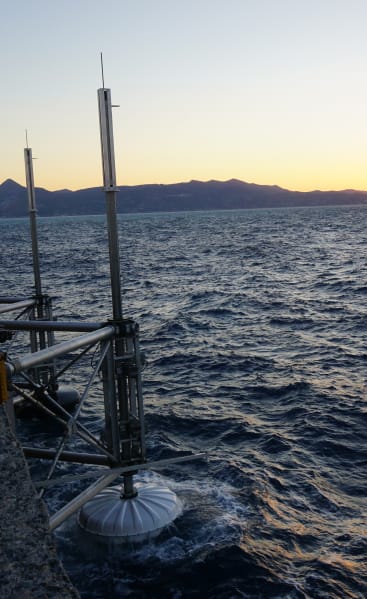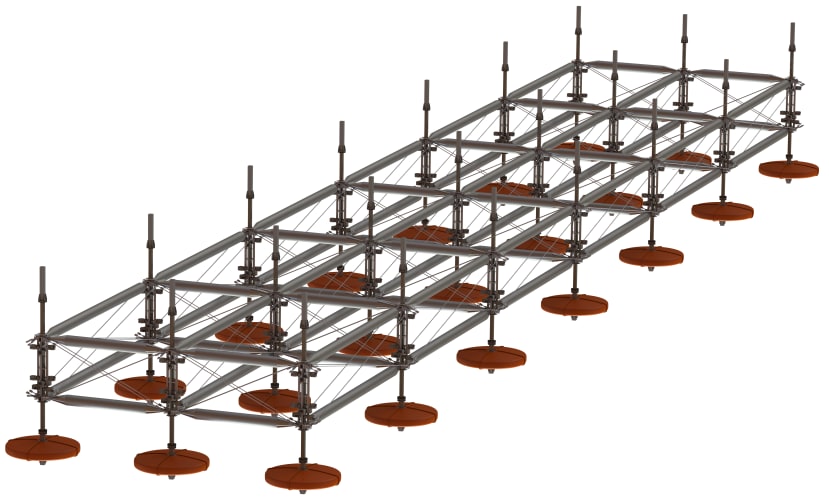How sea-produced energy could just change the world
Follow articleHow do you feel about this article? Help us to provide better content for you.
Thank you! Your feedback has been received.
There was a problem submitting your feedback, please try again later.
What do you think of this article?
Sometimes, the best ideas come when you least expect them. Automotive consultant Philipp Sinn was on a sailing trip to get away from the stress of his job when, as the waves crashed around him, he started thinking about the huge amount of energy they must produce. Inspired, Philipp decided to find a way to turn this energy into electricity and in 2014 SINN Power was born.
Today, the company is a thriving startup, making waves in the realm of sea produced energy. Ten full-time employees and 15 students occupy the basement of the same house where Sinn once lived in Gauting, near Munich. This is where metal components, PCBs, generators, measuring equipment and cables are combined to form modules that are at the core of SINN Power's innovative technology. Thanks to a lightweight connection mechanism, modules are then combined into larger floating arrays, which feature a disc-shaped float at the bottom. Measuring up to three metres in diameter, the float rises and falls with the waves; this movement is then conveyed upwards by a ten-metre-long rod, which drives up to eight generators that turn the movement into electricity. The next stage will be to fit a synchronised gear that ensures the generator always turns in the same direction, regardless of whether the rod is moving upwards or downwards.
Surviving storms
Johannes Stuck, business development manager at SINN, shows how well the system works with a video shot last winter in the harbour of the Greek city of Heraklion. The video shows huge waves in a storm crashing against two second-generation modules that have been fixed to the quay wall since June 2018. “We had no damage, everything is still intact”, he assures. This was also thanks to LAPP cables and connectors which are robust enough to withstand strong waves and corrosive seawater.
The installation in Heraklion transmits live operating data in real time to Gauting. Each module generates 24 kilowatts at their peak but the average output is a more modest 2.5 kilowatts with a smaller float. The company plans to fit the next generation of modules with larger floats, which will allow them to generate twice the amount of electricity. An array of this kind, measuring a minimum of seven by three modules, will be capable of generating 550,000-kilowatt hours per year. This is enough to supply around 100 households with electricity.
Filling power gaps with wave energy
One disadvantage of many renewable energy sources is a lack of consistency. Even the largest wind turbine is useless when the wind isn't blowing, and cutting-edge photovoltaic units cannot generate electricity at night. Filling these gaps with clean energy requires an alternative. This is where wave power comes in, providing electricity when other sources cannot. For example, SINN Power plans to install wave energy converters in the unused spaces between individual turbines in large offshore wind farms. But the technology’s potential is even greater than that.
Areas with both high and low-intensity waves are perfect for wave energy converters. The Caribbean, for example, is ideal because it offers waves all year round. The region is also a perfect market for SINN technology, as the Caribbean islands spend over 1 billion pounds every year on electricity produced by diesel generators. Alongside this financial benefit, the new technology also reduces pollution caused by diesel exhaust fumes – a great advantage in terms of sustainability and preservation of wildlife.
Support from LAPP from the start
This year, three new modules will be installed in Heraklion. These will be followed in 2020 by the first floating power station consisting of 35 individual modules, all featuring LAPP products. Besides SKINTOP cable glands, LAPP also provides ÖLFLEX cables that convey the electricity from the generators, as well as the UNITRONIC data transfer cables and control cables like the ÖLFLEX ROBUST 210 and the wiring on the PCBs. Undersea cables are also planned. “I knew LAPP from my time working as an apprentice electrician at BMW and relied on their products”, explains electronic engineer Simon Krüner. He is responsible for developing the electronics at SINN Power and he is satisfied with the support from LAPP.
Long-term vision
Within five years, SINN Power aims to sell the electricity generated by its wave power stations for less than ten cents per kilowatt hour, depending on the wave conditions. This will make it competitive against other renewable energy sources and especially against diesel generators. “60 per cent of the world’s population lives on the coast”, says Philipp Sinn, “and wave energy can cover a significant proportion of their electricity needs.”
Images courtesy of SINN Power




Comments